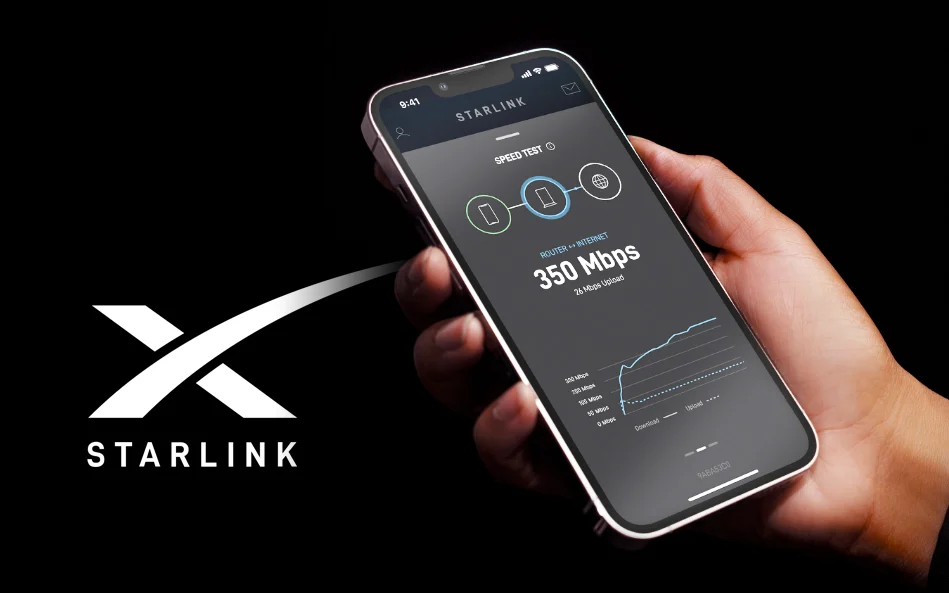
In recent years, Starlink, SpaceX’s ambitious satellite internet project, has gained significant attention for its potential to revolutionize the way we access the internet, particularly in remote and underserved areas. One of the most pressing concerns for users, however, has been the performance and latency of the service. With satellite internet traditionally lagging behind in terms of speed and responsiveness, how does Starlink hold up? In this blog post, we’ll take a closer look at Starlink’s latency and overall performance, examining what users can expect and how it compares to other internet options.
What Is Latency, and Why Does It Matter?
Latency refers to the delay in data transmission between two points, usually measured in milliseconds (ms). In the context of internet connections, lower latency is preferred, as it means less delay when sending or receiving data. For activities like video calls, online gaming, and real-time applications, low latency is crucial for a smooth experience. On the other hand, high latency can result in noticeable delays, causing frustration for users trying to engage in activities that require instant feedback.
For traditional satellite internet services, latency has been a major drawback due to the vast distance between Earth and geostationary satellites, which are typically located about 35,786 kilometers (22,236 miles) above the Earth’s surface. This long distance creates significant delays in data transmission, with latency often ranging from 600 ms to over 1,000 ms.
Starlink’s Approach to Latency and Performance
Starlink aims to address the latency problem by using a new generation of low Earth orbit (LEO) satellites, positioned much closer to the Earth—typically around 550 km to 1,200 km above the surface. This proximity significantly reduces the time it takes for data to travel to and from the satellites. As a result, Starlink users can expect much lower latency compared to traditional satellite internet services.
In real-world testing, Starlink’s latency has been reported to range between 20 ms and 50 ms, which is similar to or better than many terrestrial broadband services. For instance, fiber-optic connections, which are considered the gold standard for high-speed internet, typically have latency between 1 ms and 20 ms. While Starlink’s latency isn’t quite on par with fiber-optic, it is still impressive, especially considering that it is a satellite-based solution.
Starlink Speed and Reliability
In terms of speed, Starlink’s performance is also a major selling point. Users have reported download speeds ranging from 50 Mbps to 200 Mbps, with some even reaching speeds upwards of 300 Mbps in optimal conditions. These speeds are more than sufficient for most everyday activities like streaming HD videos, downloading large files, and browsing the web. Upload speeds tend to be lower, typically ranging from 10 Mbps to 50 Mbps, but these figures are still quite competitive compared to other satellite and even some terrestrial broadband options.
As for reliability, Starlink has faced its fair share of challenges, especially during adverse weather conditions. Heavy rain, snow, and other environmental factors can interfere with the satellite signal, causing temporary outages or reduced speeds. However, SpaceX continues to launch new satellites and refine the system, making Starlink more robust and less susceptible to weather-related disruptions.
Starlink vs. Traditional Internet Options
For users living in rural or remote areas, Starlink offers a distinct advantage over traditional internet options. DSL, cable, and fiber-optic connections are often unavailable in these locations, leaving users with limited choices. While mobile hotspots or fixed wireless internet can be alternatives, they often come with their own limitations in terms of speed, data caps, and reliability. In comparison, Starlink provides a more consistent and higher-performance solution that is available almost anywhere.
Even in urban areas, where fiber-optic internet is widely available, Starlink’s speeds and latency can compete with or even outperform other satellite services and fixed wireless solutions. However, fiber-optic still holds an edge when it comes to raw speed and consistent low latency, particularly for high-demand activities like online gaming and professional video conferencing.
Future of Starlink
As SpaceX continues to launch more satellites and improve its technology, Star link’s performance will only get better. The service is expected to become more reliable, with better coverage and faster speeds in both urban and remote areas. Additionally, with the planned addition of Starlink’s “Version 2” satellites, the system will become more efficient, reducing congestion and increasing bandwidth.
Conclusion
Star link is undoubtedly a game-changer in the satellite internet industry, offering competitive speeds and impressively low latency compared to traditional satellite options. While there are still challenges to overcome, especially in terms of weather resilience and global availability, Starlink has already made significant strides in transforming the way people connect to the internet, particularly in underserved areas. Whether you’re a remote worker, gamer, or someone living in a rural area with limited internet options, Starlink’s performance and potential make it a service worth watching in the years to come.